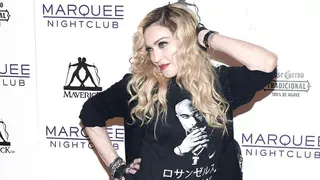January 20, 2012
Hostess Bankruptcy: Of Twinkie Defense, Twinkies & Twinks
Steve Weinstein READ TIME: 4 MIN.
Hostess, the huge national bakery Hostess is filing for bankruptcy. The company is apparently out of cash and out of options.
The company is hoping to cut costs, especially labor. For decades, the brand has become as iconic as Kodak. Oops -- scratch that: Kodak is also filing for bankruptcy. OK General Motors. American Airlines. You get the idea.
Junk Food Par Excellence
The company was built on a remarkable business plan: mass marketing of remarkably real-seeming ingestible batches of things resembling food: Twinkies, Sno Balls and Wonder Bread.
Revisiting the Twinkie Defense
The demise has given rise to cutesy headlines, such as this one in a New Jersey newspaper: "Hostess files for bankruptcy with no Twinkie defense." There have also been journalists who have used the news peg to revisit the original use of Twinkie defense.
The New York Times' Daniel Meyer
wrote in a recent column, In 1978 we discovered, above all, that Twinkies were a viable defense for murder."
Well, not quite. As everyone knows, on Nov. 27, 1978, San Francisco Supervisor Dan White, who had resigned, wanted to be reinstated and was blocked by fellow supervisor Harvey Milk, killed Milk and Mayor George Moscone in City Hall.
In the sensational 1979 trial, White's lawyers maintained that he had been depressed and had gone from a diet of health food to junk food. White was convicted of involuntary manslaughter, which many considered a slap on the wrist.
In vehement protest, gay protesters poured into the streets that night. The crowd caused huge amounts of property damage and became known as the White Night Riots.
But, as Wikipedia notes, Twinkies were never mentioned during the trial, "nor did the defense ever claim that White was on a sugar rush and committed the murders as a result."
The reporter who coined the term "Twinkie defense" is lost in controversy but a good candidate is the former San Francisco Chronicle columnist Herb Caen.
Whoever did, the legal argument entered American jurisprudence under the term "diminished capacity." It was so controversial that California voters passed Proposition 8 in 1982 that abolished diminished capacity in the Golden State.
The Twink
Which brings us to the Twink. As readers of this site probably already know, a "twink" is one of those derogatory-but-just-kidding terms gay men like throw around.
As the ever-invaluable Wikipedia defines it, a twink describes " a young or young-looking gay man (18-23 age category) with a slender, ectomorph build, little or no body hair, and no facial hair." The article cites the term "twinkle-toes" for an effeminate man.
But Wikipedia also refers to the dessert snack: "The term's namesake is the 'golden-colored phallic-shaped snack cake' Hostess Twinkie, commonly regarded as the quintessential junk food: 'little nutritional value, sweet to the taste and creme-filled.'"
Twinks and twinkles are thus fun to consume but of little real nutritive value. Also, Wikipedia helpfully notes, a twink is "memorable for his outer packaging," but not inner depth.
JustUsBoys.com adds that the yellowness of the food-like Hostess item connotes blondness, as in stupidity --�"the gay equivalent of 'bimbo.'"
The origins of how "Twinkie" came to be used for certain gay men is as lost to the mists of time as "tina" for crystal meth. But as Hostess fights for its life, it's doubtful that another term will take its place. Somehow, "lemon sherbet" just doesn't have the same ring.
Steve Weinstein has been a regular correspondent for the International Herald Tribune, the Advocate, the Village Voice and Out. He has been covering the AIDS crisis since the early '80s, when he began his career. He is the author of "The Q Guide to Fire Island" (Alyson, 2007).





